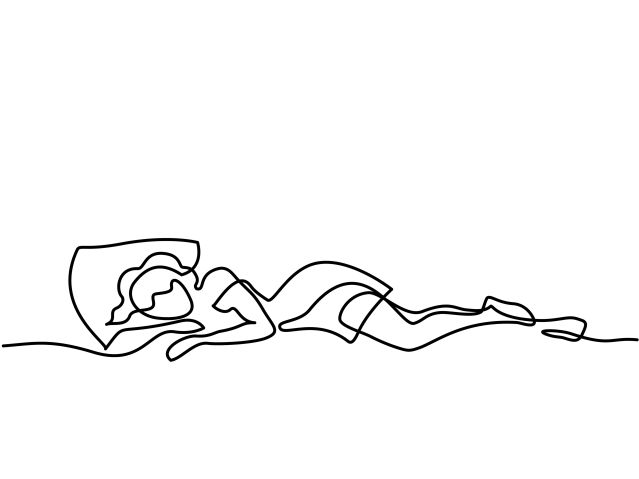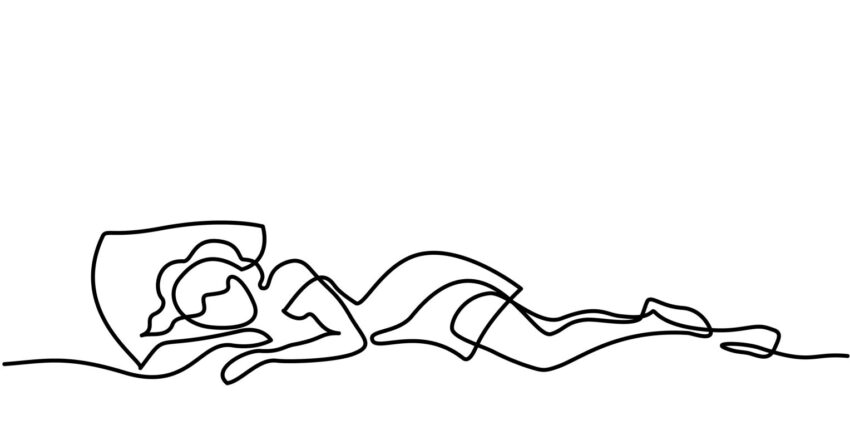
Source: Valenty/Shutterstock
Ketamine’s impact on sleep has been generally overlooked.
Ketamine has been used for decades as a short-acting anesthetic. It was developed for use on the battlefield in the 1960s yet considered safe enough to use commonly with children. More recently, it has been used off-label as a rapid antidepressant for adults with acute suicidality, treatment-resistant depression (TRD), anxiety, and other mental health conditions (Johnston, et al, 2024). Ketamine allows the brain to be in a more plastic state and has been used at psychedelic doses as well as low doses to enhance traction in psychotherapy. By itself, ketamine’s mood benefits seem to last about a week, but ketamine-assisted therapy (KAP) is making strides to extend the positive antidepressant effects of ketamine and mitigate potential risks.
Despite the many antidepressants on the market, there are a few recent advances in effective pharmacology for mental health. Hutka, et al, (2021) note that ketamine’s positive impact on mood is becoming more accepted, but ketamine’s effects on sleep have been overlooked and they believe this is a big part of its effectiveness as an antidepressant. Specifically, ketamine increases slow wave sleep (SWS), commonly called deep sleep (Stage 3 or 4), which is the most restorative stage of sleep. Ketamine also reduces the total amount of time spent awake. Improving sleep without ketamine, just using CBT-I coaching, has been found to reduce suicidal thoughts, and there is potential that a combination of medicine and therapy may be advantageous to people with mood and sleep problems, which often go hand in hand.
How ketamine may improve sleep
Insufficient deep-wave sleep is a hallmark of major depression, bipolar disorder, and other health issues. Ketamine-assisted psychotherapy (KAP) may improve mental health by taking advantage of the neuroplasticity of the brain and working with the malleability of the brain following the medicine dose. The hours and days following ketamine, personal defenses seem to relax and with the proper support, may allow habitual thought, feeling, and behavior patterns to be more easily shifted toward well-being.
Ketamine increases glutamate in the prefrontal cortex of the brain that initiates a cascading effect that increases plasticity in the brain and improves mood. This same pathway may also improve deep sleep and reset circadian rhythm disruption, and the interactions of clock genes and sleep-wake cycles may be part of why mood improves. In other words, ketamine seems to help the entrainment of the circadian clocks with external day and night cycles (Duncan, et al, 2017). In summary, for people who are good responders to ketamine (not everyone responds the same), circadian rhythms seem to shift and amplify (Duncan, Ballard and Zarae, 2019). The vicious cycle of poor mood and sleep becomes a healing cycle of positive mood and a restored brain.
How ketamine does not impact sleep
Ketamine does not appear to impact sleep spindles, alpha, or theta-wave sleep (Duncan, et al, 2013); however, the results of these studies may not translate directly from rats to humans. Many of these studies gave intravenous ketamine to rats at night, whereas most humans receive treatment during the daytime through a few different routes of administration (intramuscular, lozenge, intravenous, and others). Future research on ketamine’s effects on sleep could look at the effects on the human circadian rhythms when it is administered during the daytime through various routes of administration to get more precise data on this.
A brief refresher about the stages of sleep
Stage 1: Easily awakened. Eye movements & brain wave activity begin to slow, EEG shows theta waves (4-8 Hz).
Stage 2: Less easily awakened. Body temperature decreases. Eye movements decrease. Sleep spindles and K-complexes appear.
Stage 3 (or 3/4): Rare waking. Deep and restorative sleep. Delta waves (1-4Hz). Deep sleep is what ketamine seems to improve the most.
REM: More easily awakened (REM is not deep sleep as is often confused). Active brain waves (15-30 Hz). Rapid eye movements. Decreased muscle tone. Variable breathing and heart rate.
While ketamine is considered safe overall, like most substances, there is a risk of misuse and overuse and potential harm. It should always be used with a competent and caring health care provider and a comprehensive treatment plan that doesn’t promote the idea of a single fix for anyone.
